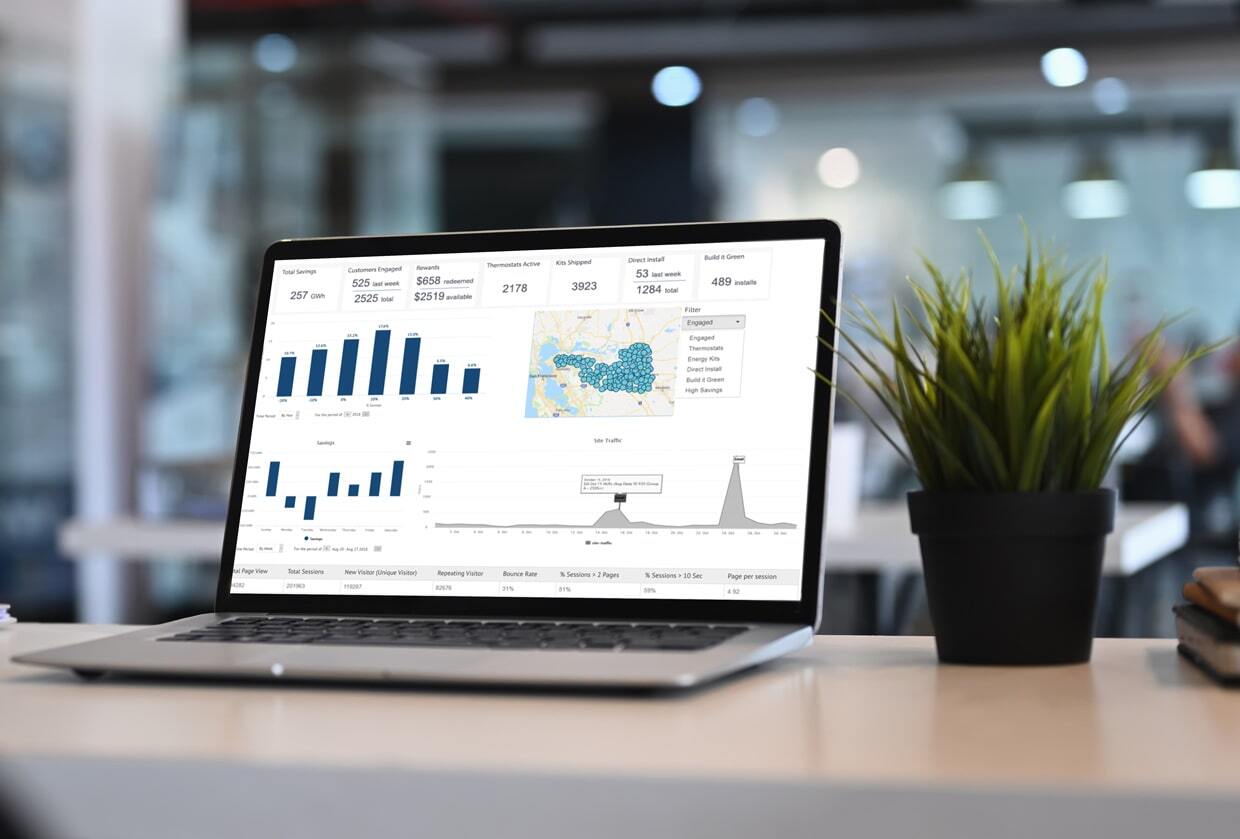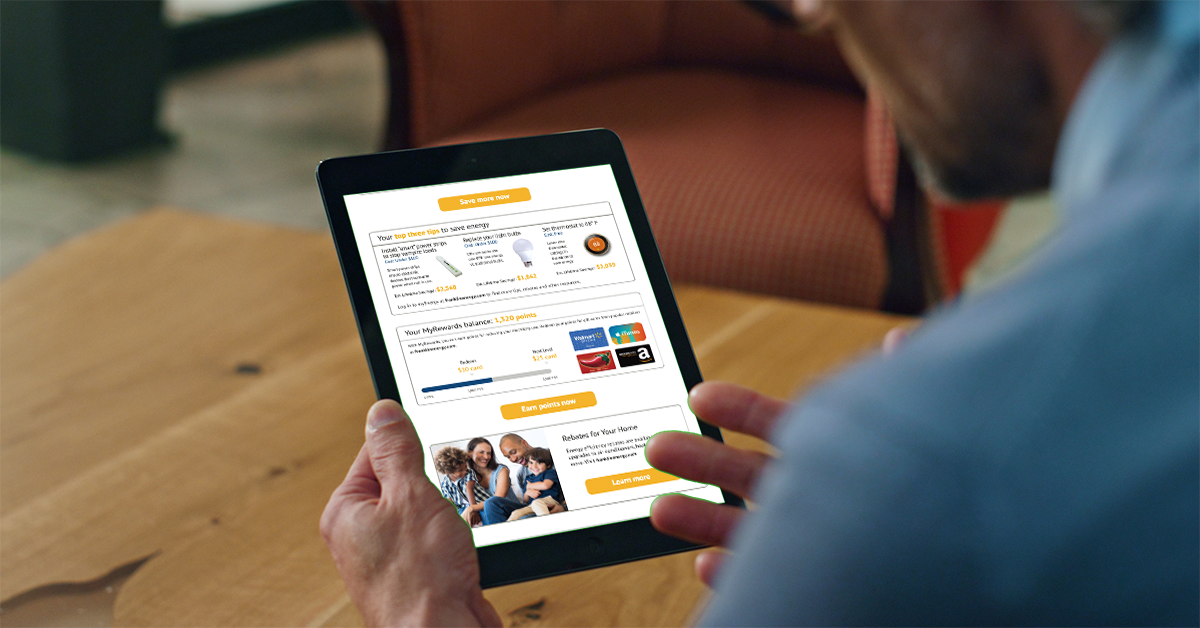
Increasingly, electric utilities are investing in consumer education to support the transition to electric vehicles. While the bulk of this spend has been approved in states where EV adoption rates are higher than average, it’s important for all utilities to consider whether their consumer education efforts are meeting customer needs and sufficiently supporting the transition to EVs. Some utilities—and more troublingly, some utility commissions, which approve utility spend—are skeptical of the role the utility can or should play in educating consumers.
This skepticism is misplaced. In many cases, states actually need consumers to adopt EVs to meet state-level zero-emission vehicle policy goals. And yet, consumers need more information about EVs—the costs, the benefits, and most importantly, how to charge—to feel comfortable adopting this new technology. Utilities are well-placed to provide this information—and what’s more, increased EV adoption puts downward pressure on utility rates by spreading fixed costs over a broader base of energy sales. This means that utility investment in educational content that accelerates EV adoption can be beneficial for all utility customers—and the utility itself.
There are a couple of reasons that electric utilities are best positioned to take on the role of educating customers about EVs and should invest in media and marketing pushes to gain attention share.
Why Utilities
First, electric utilities have credibility regarding EVs, especially those that have been leaders in promoting transportation electrification. Many utilities have firsthand experience with adopting EVs into their fleets, for example. Others have been building EV charging infrastructure for the better part of a decade. This knowledge is invaluable and gives customers reason to trust the credibility of their electric utility when it comes to the most worrisome part of EVs: the charging.
Second, electric utilities are brand-neutral, which is a rare and valuable qualification within the car-buying process. There’s a reason people do extensive research beforehand and gird themselves for battle when they go to a car dealership—it’s hard to avoid the sense that you might be sold something you just don’t need. Meanwhile, car dealers around the country are objecting to more strenuous vehicle emissions standards, claiming that they are struggling to sell EVs. But this experience is at odds with what is happening within the EV market, which is that sales continue to grow at roughly 50% year-over-year, driven by online and non-dealership sales. It’s likely that the dealerships’ experience is largely due to some short-term missteps in supply and demand, but their complaints are also indicative of a longer-term trend that’s been true, and troubling, ever since EVs first hit the lot: dealerships simply don’t know enough about EVs to sell them to consumers. Electric utilities can step in to support customers’ research process in advance of the dealership, with educational content at a range of different levels of depth so that customers can find out more at their own pace. How might a customer feel if they went to the car dealership and were confident that they knew even more than the dealer did about the car? How might they feel about the utility company that empowered them to overcome this information asymmetry?
The third reason electric utilities are well-suited to educate consumers on EVs is that more and more, electric utilities are successfully positioning themselves as their customers’ trusted energy advisor, which lends itself to supporting the EV purchase experience. When it comes down to it, electricity is… pretty complex, actually. Consumers don’t have to think much further than the gallon of milk in their refrigerator to understand how gasoline is priced and delivered. By contrast, recalling the difference between a kilowatt (how EV charging speed is measured) and a kilowatt-hour (how EV battery size is measured) probably requires most people to dredge up memories of high school physics. Even for those who loved high school physics, that’s a recipe for a terrible customer experience. Fortunately, electric utilities are already in the business of simplifying these topics for people and are turning to key tools and frameworks that can help.
Fourth, utilities have an incomparable local presence. Everyone has a utility company. Consumers are familiar with the utility’s brand and bucket trucks, and many utilities sponsor community events and give local grants through a corporate foundation. Utilities can capitalize on being hyper-local by partnering with local community-based organizations, sponsoring ride-and-drive events, and running marketing campaigns with familiar local imagery or celebrities. The point of these campaigns should be to demonstrate that EVs have an increasing presence in customers’ own neighborhoods and communities. This matters—a 2022 J.D. Power study found that only 11% of respondents who had no personal experience with EVs reported being “very likely” to consider an EV. For those who have been a passenger in an EV, that percentage more than doubles to 24%; for those who’ve driven one, it rises to 34%. The EV purchase journey is a high-touch one, and no entity is better positioned to coordinate locally on the ground than the utility.
Lastly, consumers know how to get in touch with their utility with questions. Utility call centers and social media teams should be staffed with personnel who are familiar with EVs and charging, to respond to questions in real time and provide value-add to their customers. Several utilities are going beyond this basic level of support to now offer an “EV concierge service” to walk people through their decision-making and get things set up. This work is time-intensive, but immensely valuable to consumers.
Flavors of EV Education
In addition to the couple of ideas mentioned above, EV education can be as sophisticated or as straightforward as a utility wishes. Here’s what a comprehensive portfolio of EV education could look like:
At the most basic end of the spectrum, utilities can offer static web-based information about EVs and charging that customers can peruse on their own time. A step up from this approach is to offer web-based interactive tools, such as calculators that demonstrate the long-term savings that an EV could offer a customer, leveraging the utility’s own rate structure or incentive offerings to tailor the outputs as closely as possible to the customer’s own circumstances.
In some states, utilities collaborate to participate in state-level, brand-neutral campaigns with EV education. These campaigns can make EVs feel exciting and fun—and they can feature identifiable local sites, a diversity of customers, and commonly used languages.
Utilities can also offer dynamic information about local public charging options and nearby dealerships with EV inventory. Building relationships with local dealerships can help utilities promote EV-specific offerings such as home charging rebates, managed charging programs, or EV utility rates, right as their customer is at the dealership purchasing the car.
As discussed above, putting local boots on the ground can also have an impact through opportunities such as ride-and-drive events, community fairs, or even at driver’s education classes. Offering an EV concierge service is also an option.
Of course, all this activity comes at a cost—in money, certainly, but also in utility employee time. In fact, the biggest mistake utilities tend to make when investing in consumer education is underinvesting in the staff time it takes to manage educational content and campaigns. Adequate bandwidth for utility employees in marketing and customer program functions is essential for high-quality activation of events on the ground and rapid response to EV industry news and local milestones. And it would be hard to successfully engage with dealerships and local organizations that work with targeted populations, let alone deliver EV concierge services, without experts on staff. Lastly, utilities should be mindful that the EV market is fast-growing and fast-changing, meaning that educational content must be regularly updated to be most helpful to customers—again, requiring employee time.
Education Remains Essential
While EV sales continue to grow apace among early adopters, much work remains to be done to convince the average American car buyer that an EV can be the right choice for them. And even more remains to be done to help new EV owners navigate the complex network of incentives, utility programs, and charging options so these drivers can take full advantage of the extraordinary support that is available to them. Utilities are a great place to start, given their unique positioning in the market and in the community. Given how much electric utilities stand to gain in the transition to electric transportation, the question isn’t why would we let utilities educate their customers about going electric—it’s why wouldn’t we?
To learn more about how Franklin Energy can help your utility on your transportation electrification journey, contact us.

.png)
.png)


.png)
